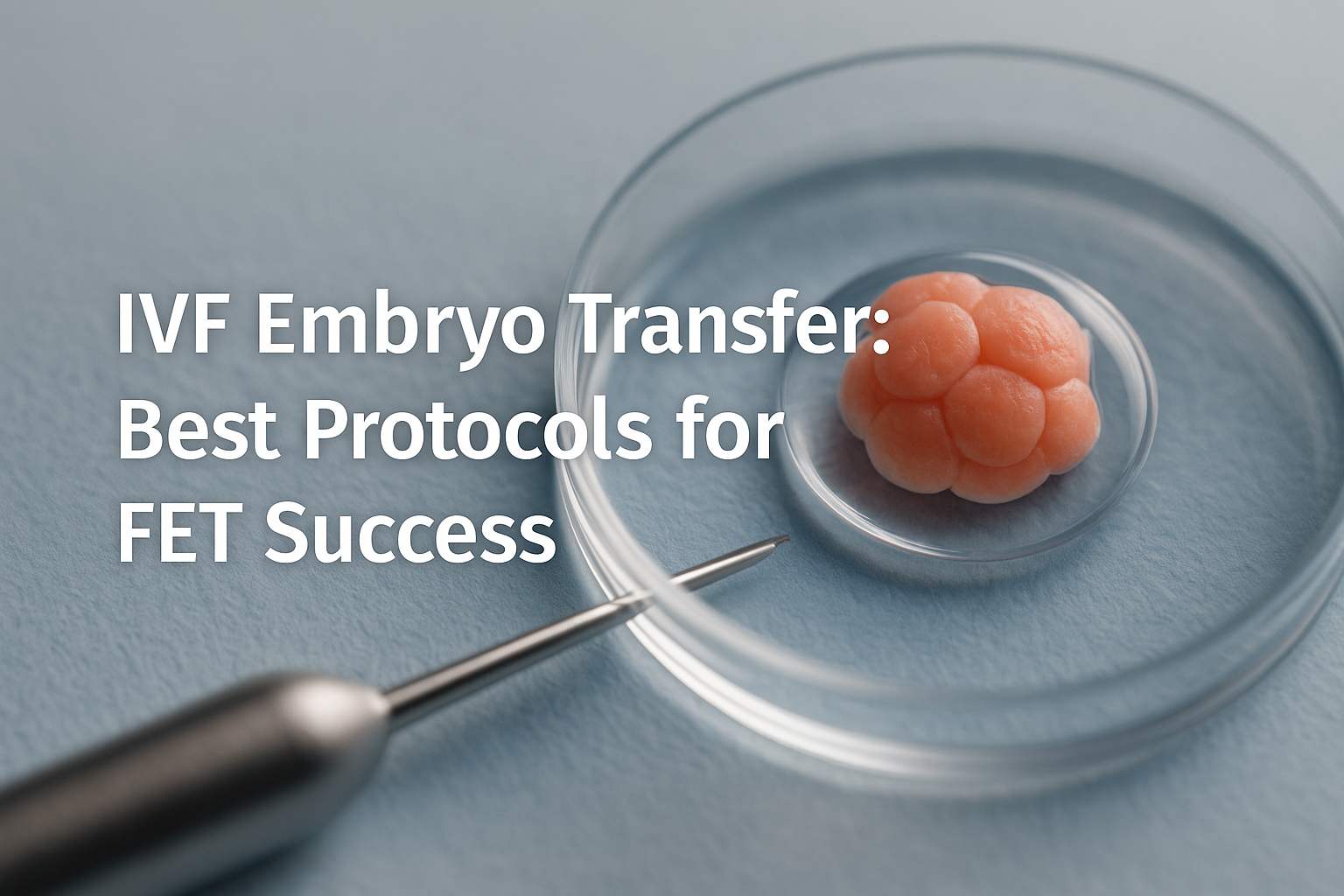Successful embryo transfer isn’t just about the quality of the embryo. It also depends on choosing the right protocol. It is a coordinated sequence of steps designed to prepare the uterus for implantation. The way a clinic times and manages the transfer can make the difference between success and disappointment. At SILK Medical, the focus isn’t on applying a standard approach. It’s on adapting each protocol to the individual case.
This article walks through what goes into a well-planned embryo transfer, and how those decisions are made.
Natural or Hormone-Controlled: Choosing the Right FET Approach
Most transfers today use frozen embryos, and when they do, the clinic has to choose between two types of preparation: natural or hormone-controlled.
In a natural cycle, the clinic monitors the patient’s own ovulation and times the transfer accordingly. This can work well for patients with regular cycles who live near the clinic and can attend frequent monitoring appointments. But it also comes with unpredictability as ovulation can shift, and timing can become complicated.
Hormone-controlled cycles remove that unpredictability. Medication is used to suppress natural ovulation and prepare the endometrium with controlled doses of estrogen and progesterone. This approach allows better scheduling and flexibility, especially when the embryo is being transferred into a surrogate or a patient traveling from abroad.
SILK Medical uses both methods depending on what offers the most stability and the highest chance of implantation for each case. Hormone-controlled protocols are typically preferred for long-distance patients and surrogacy arrangements, but natural cycles may be suggested for younger patients with predictable hormone profiles.
Why Frozen Transfers Are Often Better Than Fresh
While fresh transfers were once the standard, frozen embryo transfers (FETs) have become more common and more effective in most cases.
This shift has a few reasons. First, freezing allows the body to recover from ovarian stimulation, which can affect endometrial quality. Second, PGT-A testing (used to select chromosomally normal embryos) requires freezing after biopsy while waiting for the results. And third, modern vitrification techniques preserve embryos extremely well without reducing implantation potential.
In SILK Medical’s programs, especially when donor eggs are used or embryos are shipped, frozen transfers allow the medical team to build a stable, controlled environment for implantation, one that isn’t disrupted by stimulation drugs or timing conflicts.
Lining Isn’t Just a Detail — It’s the Environment
A good transfer protocol is based not just on the embryo, but on the uterine environment. The endometrium needs to be thick enough (typically above 7mm), and its structure should appear receptive. The right shape, known as a trilaminar pattern, indicates that the lining is ready to receive an embryo.
Hormone levels are tracked carefully. Not just estradiol and progesterone, but also LH and sometimes prolactin. If the lining develops too slowly or irregularly, adjustments can be made. If it’s not optimal, the transfer can be postponed. This type of close monitoring is standard practice at SILK Medical, and it’s one of the reasons why segmented IVF cycles (with a delay between stimulation and transfer) often perform better.
Embryo Age and Transfer Timing Must Align
Embryos can be frozen at different stages: cleavage (Day 3), early blastocyst (Day 5), or later (Day 6 or 7). Each requires a different transfer timing.
Day-3 embryos need a transfer three days after ovulation or progesterone start. Day-5 embryos match a five-day timeline. It sounds simple, but it means even a one-day misalignment can lead to lower implantation rates. For that reason, the clinic must synchronize the uterine environment with the exact development stage of the embryo.
According to the American Society for Reproductive Medicine (ASRM), correct embryo transfer timing is critical for maximizing implantation success.
SILK Medical accepts and works with embryos at various stages, including Day-3, Day-5, Day-6, and even Day-7, using adjusted protocols based on each embryo’s profile and the preparation schedule.
ERA Testing: Helpful in Some Cases, But Not a Default Tool
Endometrial Receptivity Analysis (ERA) aims to pinpoint a patient’s specific “window of implantation.” The test can be useful in certain situations such as repeated implantation failure with good-quality embryos and normal hormone levels.
But it’s not always necessary. Most patients don’t benefit from it unless other factors have been ruled out. The ERA is offered selectively at SILK Medical, and only after a careful review of the case history. It’s one of several tools available, not a standard step in every protocol.
How SILK Medical Tailors Transfer Timing
A well-executed embryo transfer isn’t just about choosing the day. It’s about the weeks leading up to it. The SILK Clinic’s protocol is built after evaluating hormone levels, endometrial development, embryo characteristics, and the patient’s broader medical profile.
The clinic uses advanced tools like the AI-powered EmbryoScope to score embryo viability and the IVFID Witness system to ensure sample security. These technologies support both quality control and precise timing. But ultimately, it’s the clinical team that makes the decisions by adapting the schedule if the lining is late, adding extra monitoring if hormone response is unclear, or recommending a freeze-all cycle if conditions aren’t optimal.
In some cases, patients arrive with shipped embryos or frozen material created abroad. In those cases, SILK’s embryologists analyze the freezing media and protocols used and adjust the thawing and transfer strategy accordingly. The same flexibility applies to scheduling for patients traveling from other countries. Most protocols are built to allow a short visit and then remote follow-up.
The Best Transfer Plan Is the One Built Around You
There’s no one protocol that’s “best.” What matters is how well it’s matched to the specific embryo, the uterus it’s being transferred into, and the timing of that transfer. A good IVF program adapts the protocol to fit the patient, not the other way around.
For those considering embryo transfer, whether with fresh embryos, vitrified ones, or shipped material, it’s worth asking not just when the transfer will happen, but why. The answer reveals how much thought has gone into improving your chance of success.


